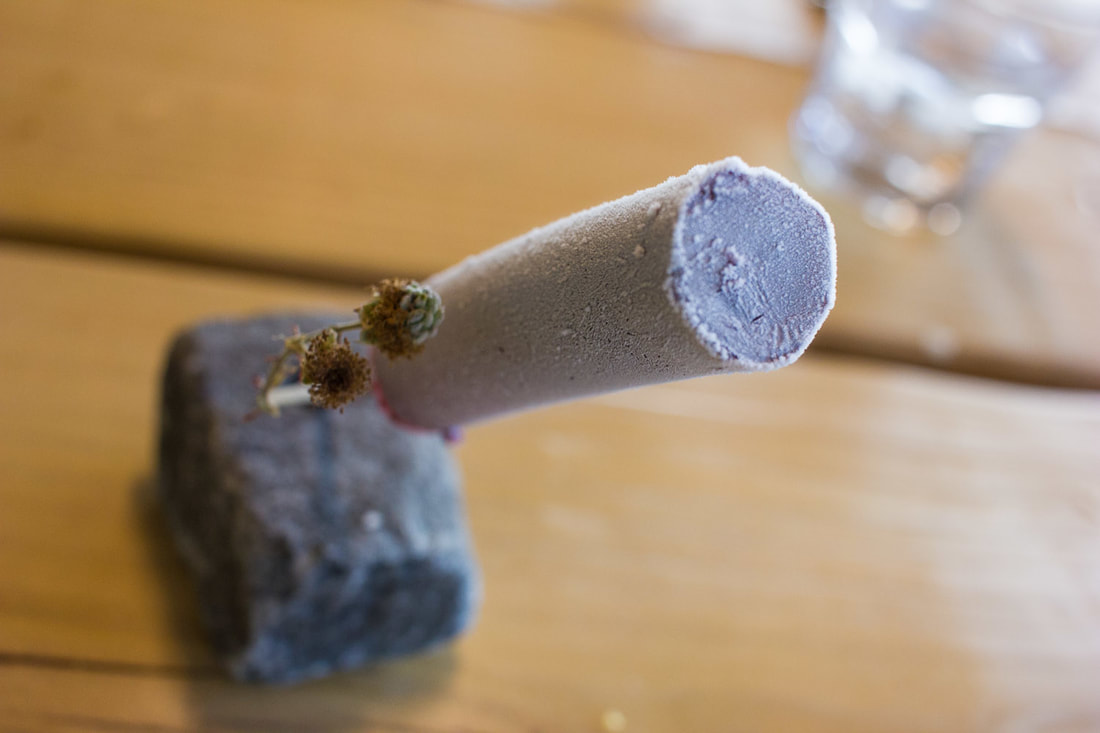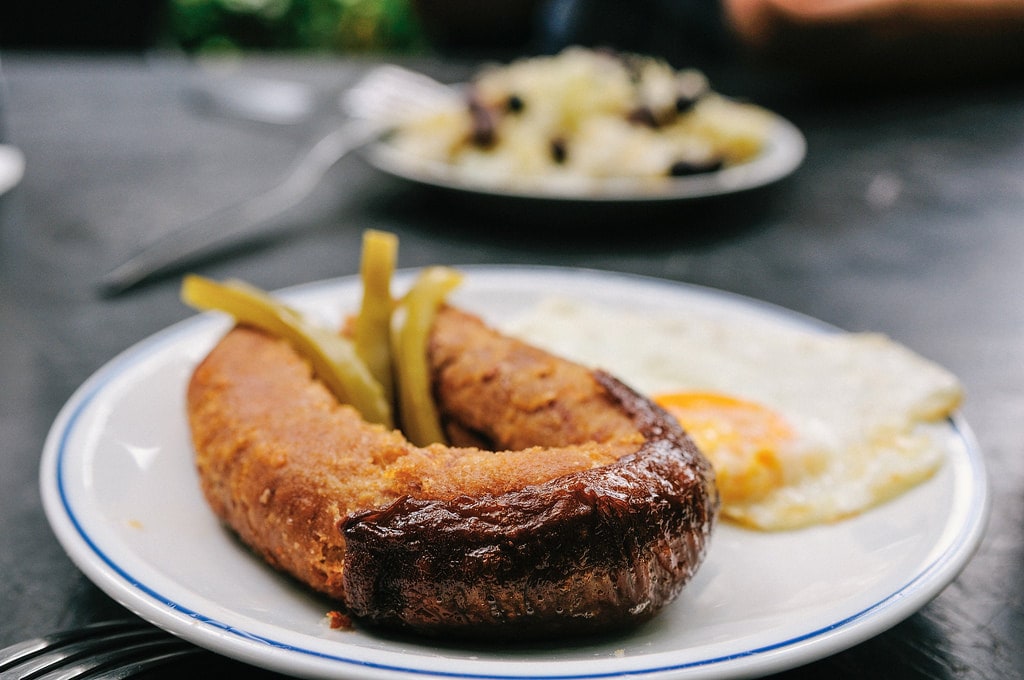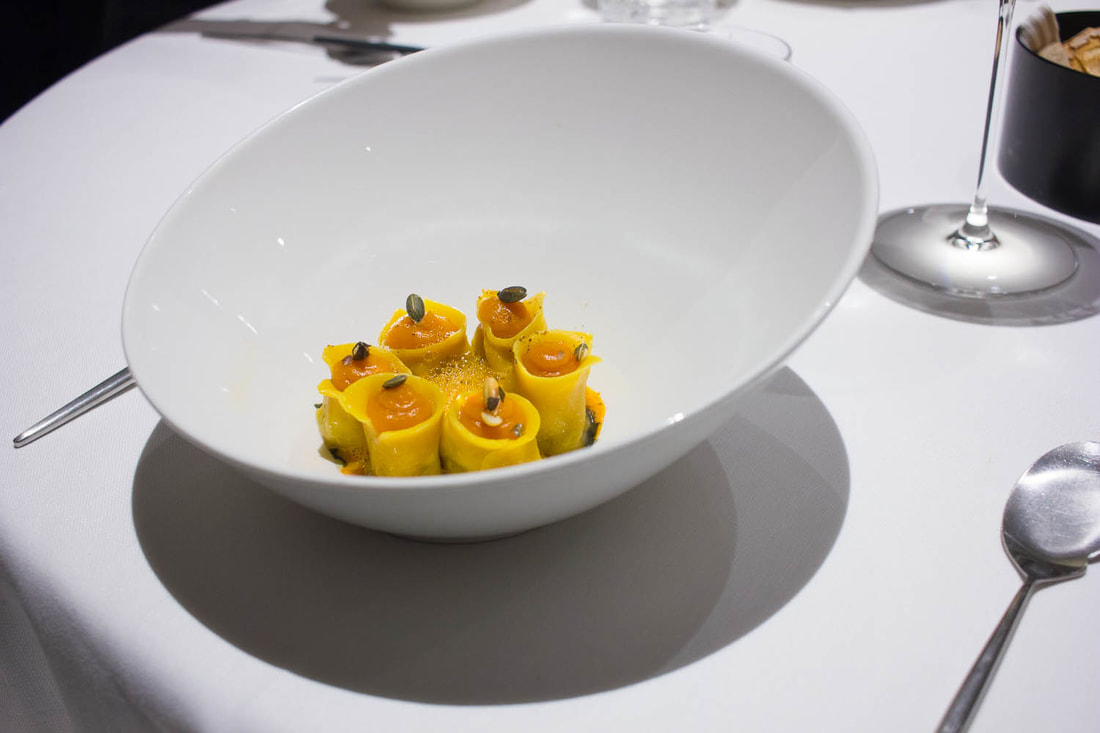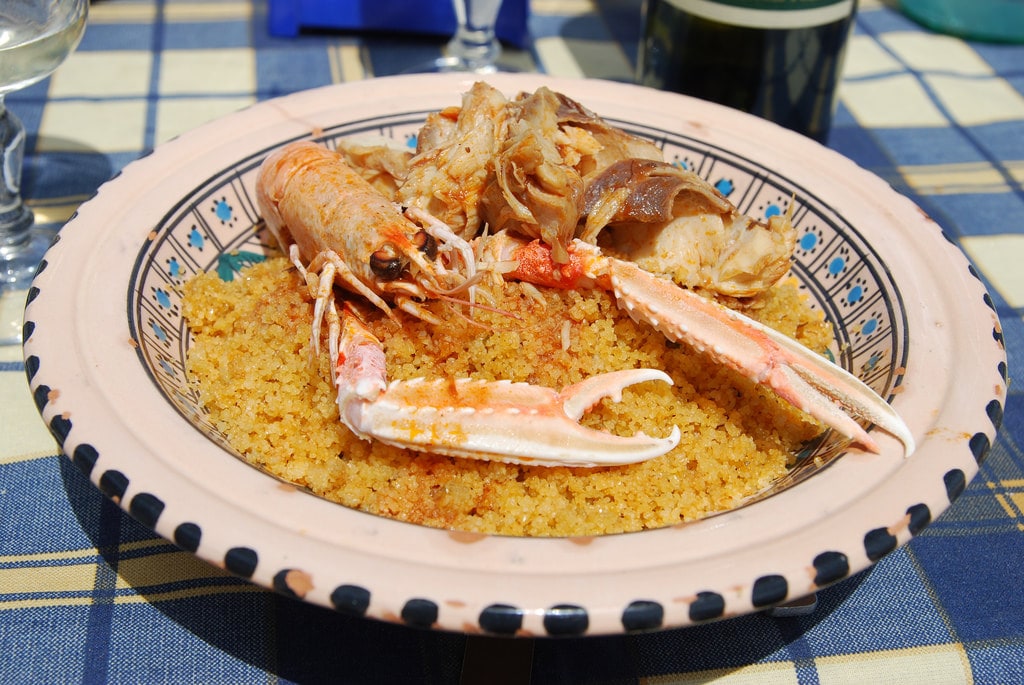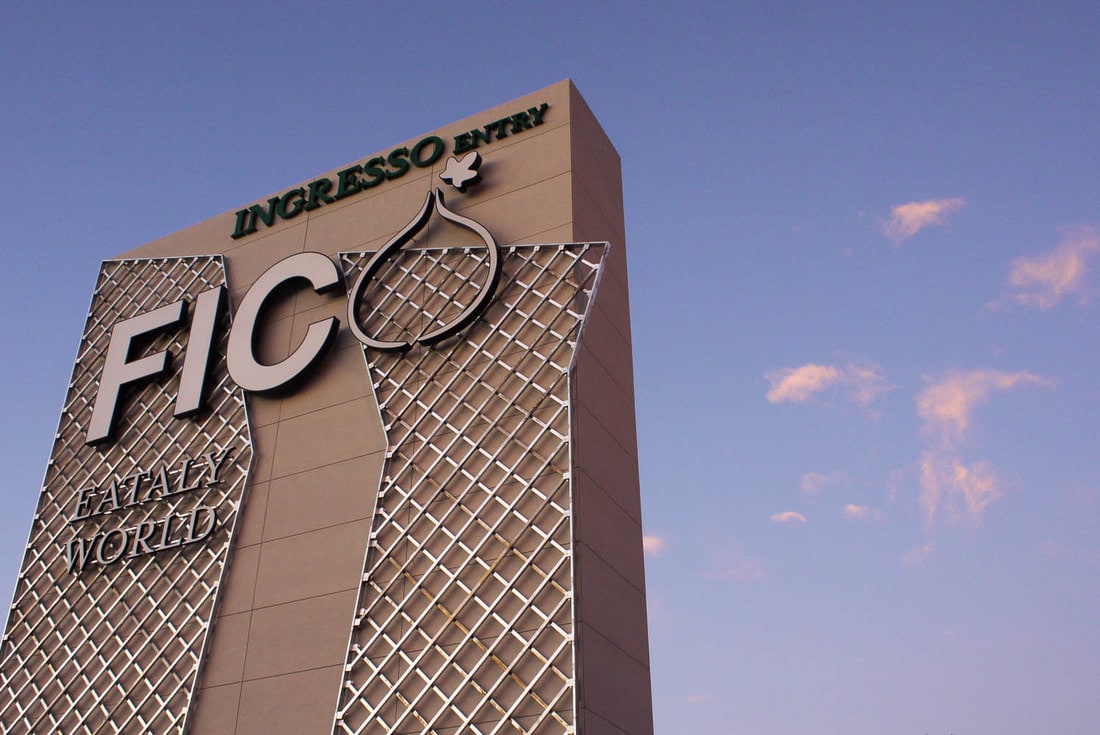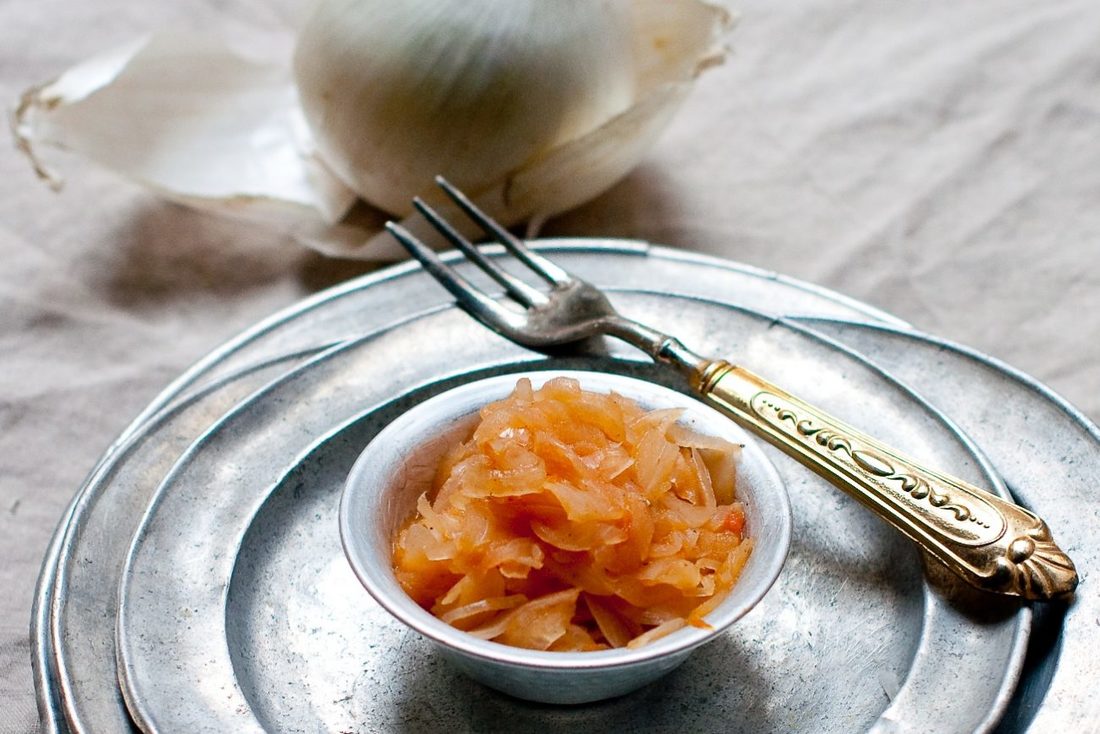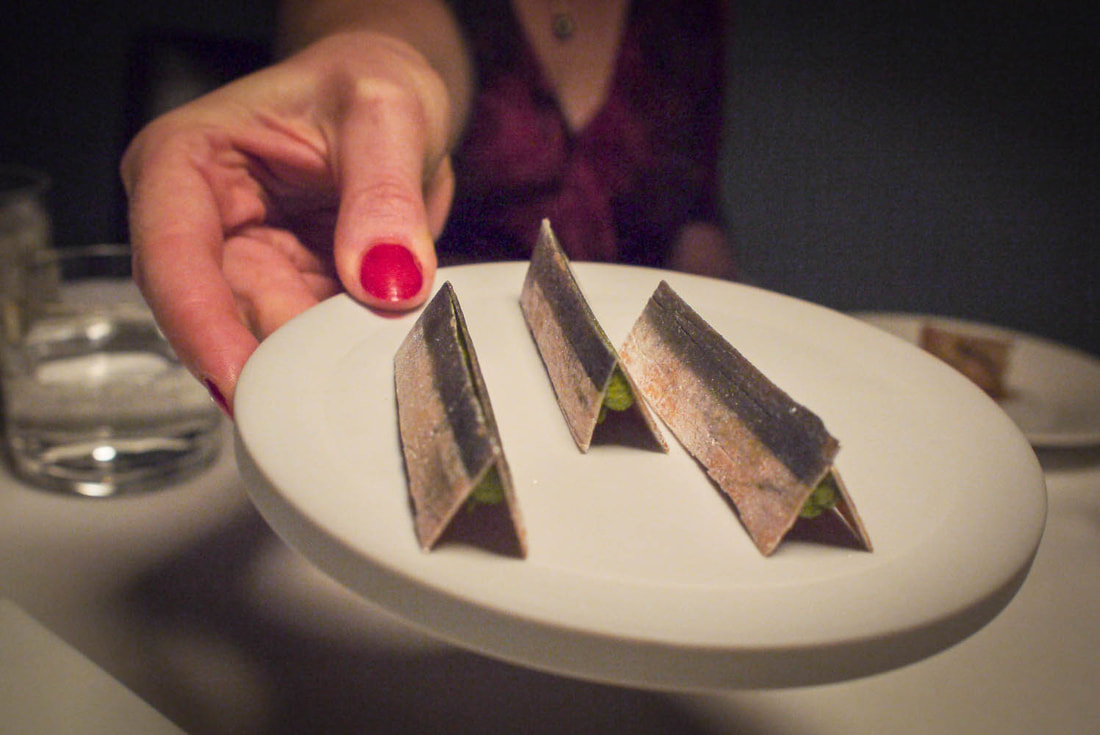Blackberry sorbet@Mrizi i Zanave, Lezhë - Albania
I spent a lunch at Mrizi i Zanave in November and I can assure you it’s a “worth a plane” experience. It’s hard to mention a single food because the idea of Altin is to offer the best of what his land can offer, provided by local selected producers, like olive oil, goat cheese and porcini mushrooms, taken from the woods and served as a starter. But don’t expect just simple dishes. The greatness of Mziri stands in the will to enhance the quality of ingredients with new ideas and techniques. So you get a blackberry sorbet stick served on its own twig, an ice bowl that hides a flower gelato or a small wild pomegranate with its fermented juice. Now that you know who Altin is, I’m sure you’re already checking the flights to Tirana.
Mrizi i Zanave Rruga “Lezhë – Vau i Dejës”, Fishtë, Lezhë 4505, Albania
Tel. +355 69 210 8032
mrizizanave.com
Alheira@Ernesto, Porto – Portugal
Alheira was created in the north of Portugal (Trás-os-Montes region) where it’s grilled on a low heat, accompanied by boiled potatoes and an olive oil with seasonal vegetables. Further south, you can find it fried and that’s how I had it in Porto. My friend Veronica introduced me to Alheira and it first I wasn’t that intrigued. “A sausage with chicken? What a terrible idea!” I said just before biting. Then everything changed. It was so far one of the most delicious and tasty dishes I’ve ever tried.
Pigeon@Max Poggi Cucina, Bologna
Our paths had crossed a couple of times recently, at Mangirò foodie walk on the hills and at Tortellino Festival, where he prepared one of the best tortellini of the event. So I decided to visit his restaurant in Trebbo di Reno for a special anniversary.
Location is elegant, service professional but informal (waiters are young guys dressed casual, a lot different atmosphere than Osteria Francescana). Even if Michelin’s inspectors seem to look away from this land, Poggi’s cuisine has nothing to envy to the best Michelin stars of Bologna area. Through a 4 courses menu (60€) called “Divertiti” (“have fun”), paired with a Friulano white wine (22€), I had all I expect from a great restaurant. Creativity, bravery, humility. My favourite dish was the pigeon, a classic of bolognese cuisine, perfectly cooked with coal. One last credit? I hate Russian salad and he made me love it.
Massimiliano Poggi Cucina
Via Lame, 65, 40013 Trebbo di Reno(BO)
Tel. 051 704217
Cuscus@Rosaria, Favignana – Italy
On my last day on the island she woke up early, bought different kind of fresh fish (scorpionfish, grouper, tub gurnard) from the fisherman and then started to prepare cuscus.
It’s a a dish of magrebine tradition, brought to western Sicily during the Arab domination. Like most traditional dishes, it takes a lot of time to be prepared. Cuscus is made with durum wheat grain, to which water is added in the ritual of “incocciatura“, the creation of tiny balls (“cocci“) on the palm of hands. Then it’s cooked in a special perforated pot, where cuscus absorbs the flavors of the underlying broth. Rosaria prepares cuscus about 3 times a year for his nephews. I was lucky enough to be invited and share one of the best lunch ever with this new family.
Cantina Siciliana
Via Giudecca, 36, 91100 Trapani TP
Tel: + 39 0923 28673
Beryani@Azam, Isfahan – Iran
Beryani in Persian means “fried”, so nothing to do with the Indian version which includes rice. Inside Isfahan’s bazaar, between spice and copper shops, you can find a rough place that serves fried lamb meat patty, crowned with pistachio, snuggled inside a tender taftoon bread.
The old man sat next to me, showed me how to eat Iranian Beryani: just with your hands. He cut a piece of bread, put some meat and wild herbs in the middle and then bite. To better digest Beryani he drank kashk, a preserved goat’s milk yoghurt similar to Turkish ayran. It wasn’t exactly the lightest dish ever (it took me a full day of walking to digest it actually) but for sure one of the most delicious.
Azam Beryani
Kamal Esmaeel St., Esfahan 81464, Iran
Tel. +98 31 1212 5730
Where to sleep
Nasim at Howzak House can host you in his beautiful traditional house in a great position and the best Iranian welcome


